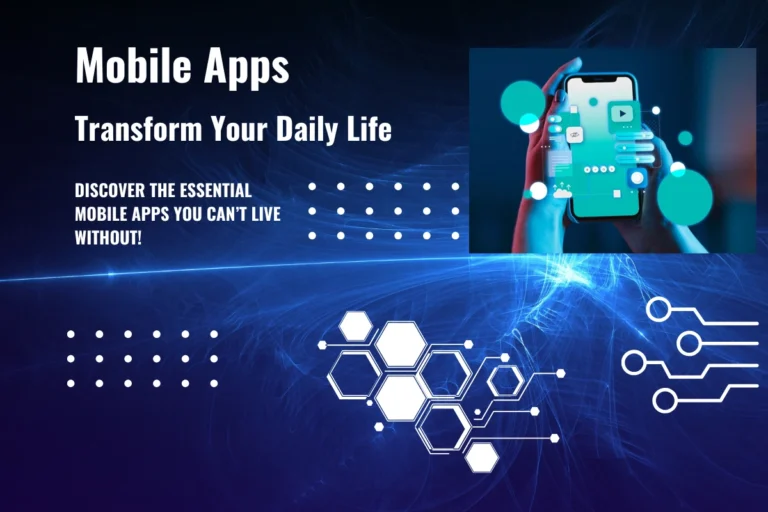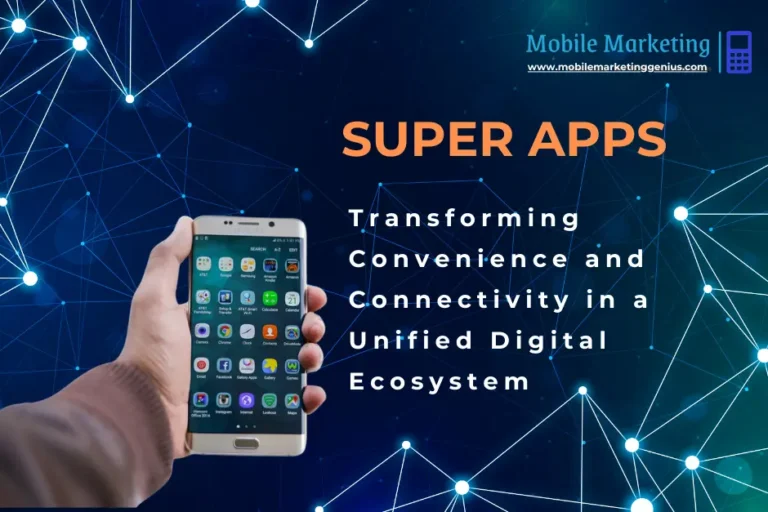App Remarketing: Elevate User Engagement & Retention to New Heights

In the mobile app world, users face thousands of choices. Keeping them interested can be tough. Studies reveal that app use drops sharply just three days after download. But, with smart app remarketing, you can win back lost users, increase retention, and grow your app business over time.
Email marketing can bring in a big return, with $36 for every dollar spent. Keeping users engaged is key to success in a crowded app market. App remarketing helps by sending personalized messages to users based on their actions.
App remarketing can boost user interest, lower the number of users who leave, and help your app grow. This article will dive into the best ways and practices to make your app remarketing campaigns work best for you.
Table of Contents
Understanding App Remarketing
App remarketing, or app retargeting, helps bring back users who have used a mobile app before. It aims to get users to do something else or come back if they haven’t converted yet. This is key because about 90% of users leave an app within a week after installing it.
It boosts ROI, builds lasting customer relationships, and keeps users coming back.
What is App Remarketing?
App remarketing targets users who have already used a mobile app. It sends them personalized messages to remind them of the app’s benefits and spark their interest again. Users who are retargeted have 152% more engagement than new users who aren’t.
Benefits of App Remarketing
App remarketing is great for app developers and marketers. It’s cheaper to keep users than to get new ones, leading to better retention and success. Retargeted users also make 37% more revenue in the first 30 days than users who aren’t retargeted.
It also lets you target users precisely, send them personalized messages, and reach them on different devices. This makes user engagement efforts more effective.

“Acquiring a new user can be five to ten times more expensive than re-engaging an existing one.”
In 2021, people spent 4.8 hours a day on mobile devices, leading to over $170 billion in app market spend. App remarketing is a big chance for developers and marketers to boost user engagement, retention, and success in the long run.
Strategies to Improve App User Engagement
To boost user engagement and keep users coming back, mobile app developers should focus on a few key areas. They need to make the onboarding process easier, use deep links, and add fun elements to the app experience.
Simplify the Onboarding Process
The first time a user opens your app is very important. A smooth onboarding process can make a great first impression. By making it easy to start using your app, you can get users excited and engaged right away.
Integrate Deep Links
Deep links help users pick up where they left off in your app. This makes it easier for them to get back to what they were doing. It’s a great way to keep users interested and coming back for more.
Gamify User Experience
Adding game-like elements, like points and leaderboards, can make your app more fun. It encourages users to keep using your app and share their progress with friends.
| Engagement Strategies | Benefits |
|---|---|
| Simplified Onboarding | Reduces barriers to accessing key app features, encouraging user engagement from the start. |
| Deep Links | Directs users to specific in-app actions they’ve previously started, helping to re-engage and retain them. |
| Gamification | Makes the app experience more engaging and rewarding, driving consistent user interaction and sharing. |

“Engaged customers in the retail banking industry generate 37% more annual revenue than those who don’t actively engage with their banks.”
By using these strategies, app developers can create a more enjoyable and rewarding app experience. This can lead to more users staying engaged and coming back for more.
Leveraging Push Notifications
Mobile apps use push notifications to keep users engaged. These messages are timely and tailored to each user. They can greatly increase app visits and keep users coming back. Push notifications are more visible than emails and can lead to more sales.
Using push notifications with emails and SMS makes the customer journey smoother. This makes them even more effective.
Personalized Push Notifications
Personalized push notifications are key to keeping users. They send messages that match what users like and do. This makes the app more engaging and relevant.
By analyzing how users react to push notifications, you can make them even better. This includes looking at open rates and how many people click on them.
Location-Based Push Notifications
Location-based push notifications send messages when users are nearby. They offer timely and relevant information. This can make users more likely to use your app.
These messages can have a 45% click-through rate. Using location data makes the app experience more personal and engaging. This can increase app usage and loyalty.
To get the most out of push notifications, time them right and make them personal. A good strategy includes segmenting users and integrating push notifications with other marketing efforts. This can boost engagement, retention, and sales for your app.
Incorporating Chatbots
Adding AI-powered app chatbots to your mobile app can make it better for users and increase chatbot user engagement. These smart in-app chatbots offer 24/7 help, answer questions, and show users how to use your app. This makes the app more personal and fun to use.
Chatbots help increase sales by letting users buy things right in the chat. This can lead to a 20-40% boost in sales compared to regular ads. Brands see a 75% jump in customer interest when they use chatbots in ads. Chatbots also make ads more memorable, keeping users interested for 30-50% longer.
Using chatbot integration in your app helps you learn more about your users. This can make your ads 25-40% better by targeting the right people. Chatbots also help improve ad results by up to 60% by adjusting to what users like. Plus, chatbots help keep customers coming back, with a 20-35% rise in repeat business.
When adding app chatbots, make sure they work well and keep an eye on them. Start small to avoid problems and make sure everything goes smoothly.
By using AI chatbots in your app, you get many benefits. You’ll see better customer service, more user interaction, and smarter choices based on data. Chatbot chatbot integration can really boost your app’s performance.
Analyzing App Analytics
Looking into app analytics is key to boosting user engagement. The activation rate shows how many users start using the app’s main features. This tells you if your app’s first impression is strong. On the other hand, user acquisition data shows how many new users find your app. This helps you see which marketing efforts work best.
The retention rate is vital, as it tracks how often users come back. It shows if your app keeps users interested and coming back. By watching these metrics, you can spot areas to improve and make choices based on data to keep users engaged.
“Embrace, established in 2016, is a mobile-first performance management platform based in San Francisco and has notable clients like Square, DraftKings, and OkCupid.”
Platforms like Mixpanel, Firebase Analytics, Amplitude Analytics, and CleverTap help track important user metrics. Using these tools, you can understand your app better and make choices to keep users coming back.
App Remarketing Best Practices
To make your app remarketing work better, follow some key steps. Use contextual retargeting and personalize ads for each user. Also, keep improving your campaigns and ads. These steps will help you keep users interested and grow your app.
Contextual Retargeting
Contextual retargeting shows ads that match what users have done before. It uses their actions and likes to send them ads that really speak to them. This makes them more likely to come back to your app.
Personalization through Segmentation
Splitting your users into groups lets you send them ads that really fit their needs. This makes your ads more effective and builds stronger connections with your audience.
Campaign Optimization
Always check how your campaigns are doing and make changes as needed. Look at things like how many people click on ads and how much money you make from them. This helps you get better at targeting and messaging.
Creative Optimization
The look and words of your ads matter a lot. Try different versions to see what works best. This way, you can make your ads more effective.
By using these tips, you can make a strong app remarketing plan. It will help you keep users coming back, increase sales, and make your app more successful.
| Metric | Statistic |
|---|---|
| Conversion Rate for Apps Running Retargeting Campaigns | 17.5% see a 25% conversion rate |
| User Awareness of Ad Retargeting | Three out of four users notice ad retargeting |
| Top Industry Using Retargeting Campaigns | Retail |
| User Retention After App Install | Drops significantly as early as three days |
“Contextual retargeting delivers ads based on the user’s previous in-app interactions and interests, while personalization through segmentation allows you to tailor messages and offers to specific user groups.”
App Remarketing: Boost User Engagement & Retention
App remarketing is a key strategy for keeping users engaged and loyal. It helps by reactivating inactive users and encouraging active ones to do more. This approach also makes experiences more personal, leading to increased loyalty and growth.
AppsFlyer shows that app remarketing can increase paying users by 50%. Apps using this strategy have 15% more paying users than those without it.
To succeed in app remarketing, you need a detailed plan. This plan should use data and best practices in user segmentation, push notifications, and campaign optimization. It aims to reach users who have used the app before. It also uses various channels like WhatsApp and push notifications for targeted messages.
Link remarketing targets people who have clicked on specific links or visited certain webpages. This method boosts marketing effectiveness and conversion rates without needing to code. Influencer remarketing gives influencers unique links to drive conversions. Ad targeting based on influencer traffic can also boost engagement and conversions.
Using app segments sync to Facebook can make ads more personal. This leads to better engagement and retention rates. Ad audience sync allows for creating custom audiences on Facebook based on user behavior in mobile apps. These strategies help app marketers increase user engagement and retention, leading to long-term growth and success.
Case Study: PermataBank’s App Remarketing Success
PermataBank, a top bank in Indonesia, used app remarketing to boost user engagement. They got over 8,300 new loan apps through their mobile app, PermataMobile X. They targeted well, optimized campaigns, and made ads creative. This helped them reach 50% of their audience monthly and increase loan approval by 33%.
PermataBank made ads personal by knowing who to target and when. They focused on users in Jakarta with fast internet. They used videos, banners, and native ads to get more people involved. They also kept improving their ads based on how they were doing.
PermataBank’s success shows how good mobile marketing can help businesses grow. Rajesh Kumar, the Chief Digital Officer at PermataBank, said, “Our app remarketing campaign has shown how using customer data and personal experiences can lead to real growth.”
This story shows how app remarketing can change the game for businesses. By using smart targeting, creative ads, and watching results, PermataBank raised the bar for mobile app success.
Conclusion
In the competitive world of mobile apps, app remarketing is key. It helps re-engage users, increase mobile app engagement, and keep users coming back. Tactics like personalized push notifications and in-app gamification make apps more engaging.
Success comes from a mix of strategies. This includes segmenting users, creating engaging content, and managing campaigns well. By using app re-engagement strategies and following app marketing best practices, businesses can reach their goals.
As mobile apps keep changing, app remarketing stays important. Marketers who keep up with trends, use data, and improve their campaigns will keep their apps successful.







3 Comments
Comments are closed.